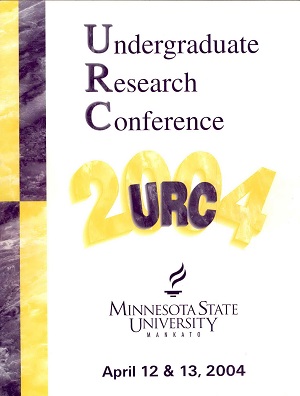Spatial Intelligence and the Ability to Comprehend and Execute Textual/ Graphical Instructions
Location
CSU 253/254/255
Start Date
13-4-2004 12:45 PM
End Date
13-4-2004 2:45 PM
Student's Major
English
Student's College
Arts and Humanities
Mentor's Name
David Engen
Mentor's Department
Communication Studies
Mentor's College
Arts and Humanities
Description
Performing a task such as solving a Rubik's cube can be very difficult, but it can be done after enough twists and turns. However, only an individual with extremely high spatial intelligence could be expected to solve a Rubik's cube in his or her head. Discussing the concept of spatial intelligence, Howard Gardner makes it clear that . .Spatial intelligence is closely tied to, and grows directly out of, one's observations of the visual world." The term spatial intelligence, as it pertains to my research, derives from the ability to visualize and manipulate three-dimensional objects in your mind. In this experiment, I tested approximately 100 college students on two things: 1) their spatial intelligence, and 2) their ability to comprehend and execute a specific set of instructions. I used a standardized spatial test to gauge their spatial abilities. The students then had to complete an origami using one of three types of instructions: textual, graphical, or a combination of the two. Comparing the results between the three instructional mediums, I found a relationship between spatial intelligence and the ability to comprehend textual/graphical instructions.
Spatial Intelligence and the Ability to Comprehend and Execute Textual/ Graphical Instructions
CSU 253/254/255
Performing a task such as solving a Rubik's cube can be very difficult, but it can be done after enough twists and turns. However, only an individual with extremely high spatial intelligence could be expected to solve a Rubik's cube in his or her head. Discussing the concept of spatial intelligence, Howard Gardner makes it clear that . .Spatial intelligence is closely tied to, and grows directly out of, one's observations of the visual world." The term spatial intelligence, as it pertains to my research, derives from the ability to visualize and manipulate three-dimensional objects in your mind. In this experiment, I tested approximately 100 college students on two things: 1) their spatial intelligence, and 2) their ability to comprehend and execute a specific set of instructions. I used a standardized spatial test to gauge their spatial abilities. The students then had to complete an origami using one of three types of instructions: textual, graphical, or a combination of the two. Comparing the results between the three instructional mediums, I found a relationship between spatial intelligence and the ability to comprehend textual/graphical instructions.




